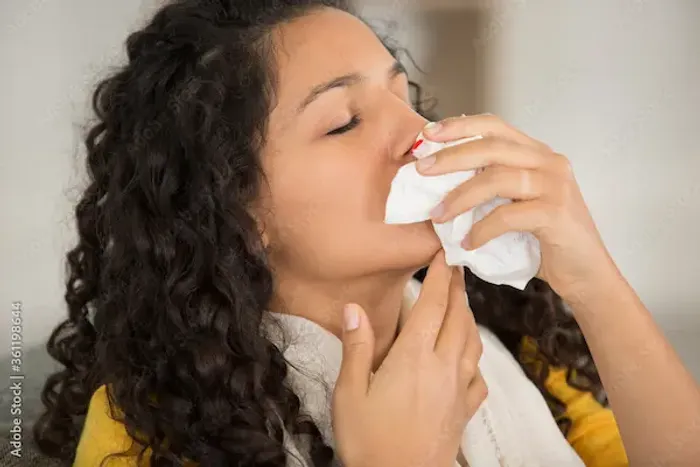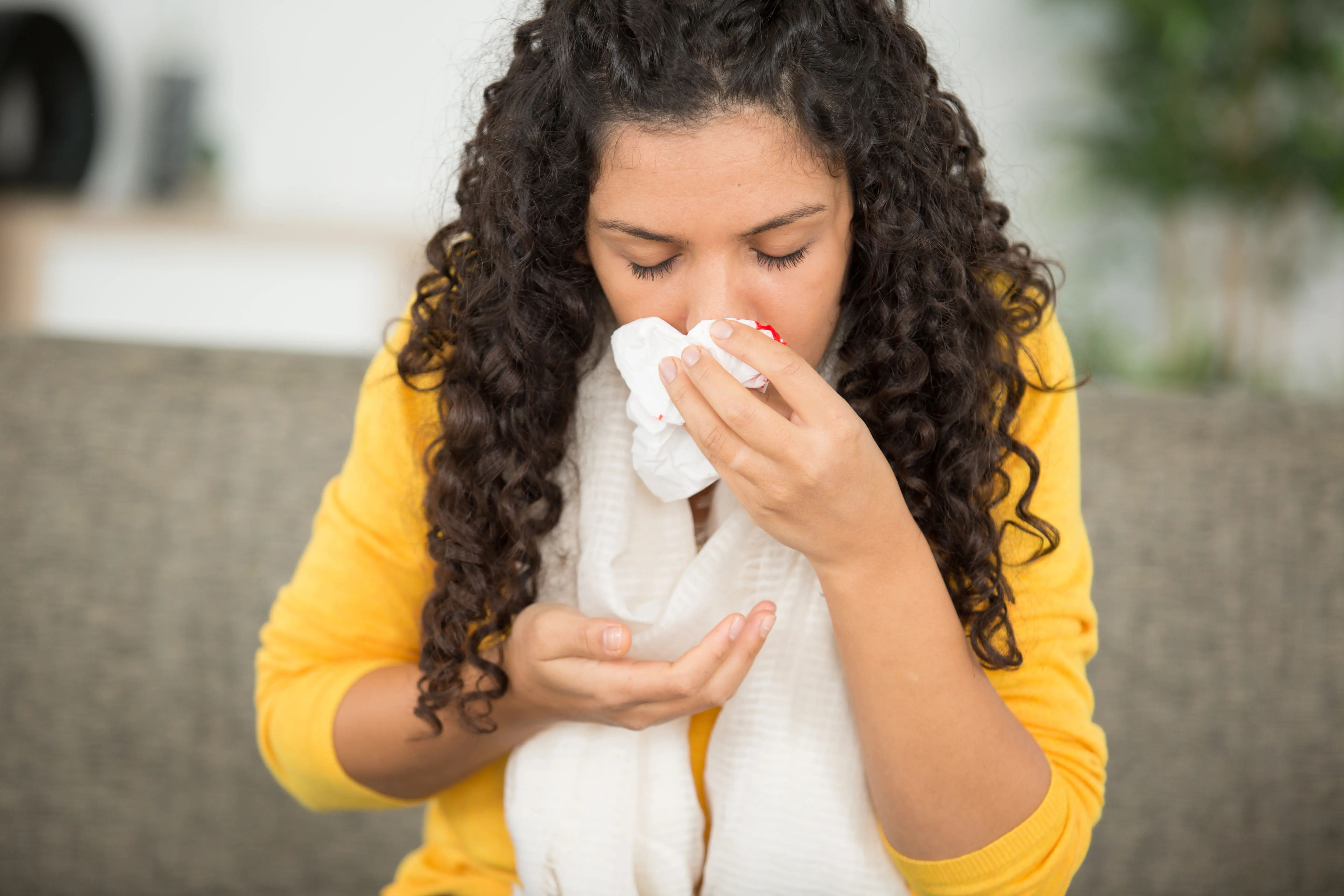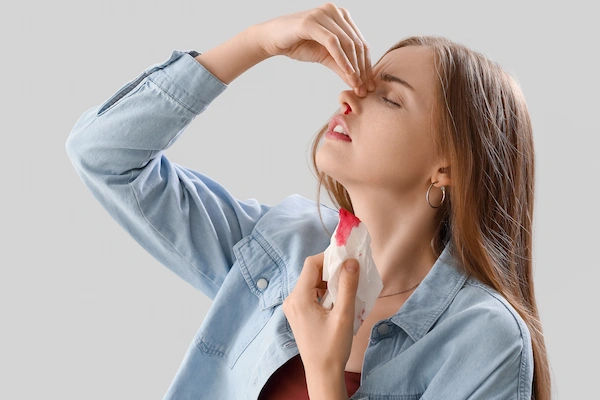Guide to Nose Bleeding First Aid Kit Home Care What To Expect
Learn how to stop nosebleeds at home, build a first aid kit, provide aftercare, and know when to seek medical help. Expert tips for children, adults, and those on blood thinners.


Nosebleed Basics: Why They Happen and How Common They Are
Understanding the causes and prevalence of nosebleeds helps you act quickly and confidently.
Most nosebleeds (epistaxis) are anterior—bleeding from the front of the nose where delicate vessels converge
(Kiesselbach’s plexus). These are typically triggered by dry air, nose picking, allergies, colds, or minor trauma. Posterior
nosebleeds, less common but more serious, come from deeper vessels and may bleed into the throat. Data suggest up to
60% of people will experience a nosebleed in their lifetime, with fewer than 10% requiring medical attention. If you live
in a dry climate, use indoor heating or air conditioning, or have seasonal allergies, you’re at higher risk for intermittent bleeds.
Key risk factors:
- Dryness and irritation: heated homes, low humidity, frequent blowing
- Inflammation: allergies, viral infections
- Medications: blood thinners (warfarin, DOACs), antiplatelets (aspirin, clopidogrel), nasal steroids if misused
- Structural issues: deviated septum, nasal polyps
- Systemic conditions: uncontrolled hypertension, bleeding disorders
Understanding the two main types (anterior vs posterior nosebleed) informs your approach. Anterior bleeds respond well to proper compression and topical vasoconstrictors like oxymetazoline, a common decongestant spray. Posterior bleeds are often heavier, can cause blood to run into the throat, and may require urgent care.
Quick anatomy tip: pinch the soft, fleshy lower nose (not the bony bridge) to compress the bleeding area. Forward lean, steady pressure for 10–15 minutes, and a nosebleed-specific first aid kit solve most events at home. If bleeding is heavy, recurrent, or you feel faint, seek help. Persistent nosebleeds beyond two weeks should be evaluated online with Apollo 24|7.
Consult Top Specialists
Immediate First Aid: The Right Steps to Stop a Nosebleed Now
Knowing the correct sequence and timing can stop a nosebleed safely and quickly.
When a nosebleed starts, act fast and follow this routine:
- Sit up and lean forward
- Leaning forward prevents swallowing blood, reducing nausea and coughing. Avoid reclining or tilting your head back.
- Blow once, gently
- Clear clots with a single, gentle blow to let sprays reach the bleeding site.
- Spray oxymetazoline (if available)
- Use 2–3 sprays into the bleeding nostril. Avoid repeated daily use outside of nosebleed management.
- Pinch the soft part of the nose
- Pinch the soft, fleshy lower nose with thumb and index finger for 10 minutes. Set a timer and resist “checking” early. Repeat if still bleeding.
- Add a gauze pad or hemostatic nasal dressing
- Roll a small piece of sterile gauze or use a calcium alginate dressing before pinching to promote clotting.
- Cool the nose and cheeks
- Apply an ice pack wrapped in cloth over the nose and cheeks to constrict vessels.
What not to do:
- Don’t tilt your head back
- Don’t stuff tissue deep into the nostril
- Don’t stop pressure early
Case studies show most anterior bleeds resolve with compression and vasoconstrictors, reducing the need for packing or cautery.
Build a Nosebleed-Ready First Aid Kit: Essentials and Smart Upgrades
A dedicated first aid kit ensures rapid response.
Essentials (home and travel):
- Nitrile gloves (non-latex), 2–4 pairs
- Oxymetazoline nasal spray
- Sterile gauze pads, rolled cotton, or small non-stick pads
- Hemostatic nasal dressings (e.g., calcium alginate)
- Antiseptic wipes or hand sanitizer
- Small blunt-tip scissors
- Instant cold pack
- Disposable face mask
- Small flashlight or phone light
- Instruction card with compression rules and emergency numbers
- Timer or phone
Optional upgrades:
- Saline nasal spray and petroleum jelly/saline gel
- Butterfly adhesive closures, adhesive tape
- Nose clip for swimmers
- Silver nitrate sticks (clinician use only)
- Child-sized gloves and mirror
Storage and maintenance:
- Use a rigid, labelled box; keep one at home, one in car/backpack
- Check expiry every 3–6 months and restock after each use
Tip: Include a QR code on the instruction card linking to a tutorial video for stress-free reference.
How to Use Your First Aid Kit: Step-by-Step With Pro Tips
Preparation and safety reduce mistakes during an episode.
Step 1: Prepare and protect
- Wear gloves and mask, have person sit upright and lean forward, hold a towel/bowl, turn on a flashlight if needed
Step 2: Clear and constrict
- Gentle blow to remove clots, then 2–3 sprays oxymetazoline
Step 3: Pack and pinch
- Place gauze or hemostatic dressing gently inside the nostril and pinch soft lower nose for 10 minutes. Repeat if necessary
Step 4: Cool and calm
- Ice pack over nose and cheeks, coach steady breathing
Step 5: Clean up and reassess
- Remove external gauze carefully; follow instructions for any dressing. Clean with antiseptic, avoid nose blowing for 12 hours
Safety cautions:
- Limit oxymetazoline to nosebleed control
- Prefer acetaminophen over NSAIDs immediately after bleed
Tip: Colour-code kit interior to guide sequence in stress.
Consult Top Specialists
Home Care After the Bleed: Comfort, Prevention, and Recurrence Control
Proper care post-bleed supports healing and prevents recurrence.
Moisture:
- Saline spray 2–4 times daily
- Thin layer of petroleum jelly or saline gel twice daily
- Humidifier 40–50% humidity
Activity and medication:
- Avoid heavy lifting, bending, straining, hot showers/drinks 24–48 hours
- Sneeze with mouth open; avoid nose blowing for 12–24 hours
- Use acetaminophen if needed; avoid NSAIDs unless advised
Prevention habits:
- Manage allergies and follow nasal steroid technique
- Trim nails; coach children not to pick
- Maintain indoor air quality and monitor blood pressure
Seek evaluation for frequent bleeds or bleeding disorders. Apollo 24|7 can provide home tests (CBC, PT/INR) if needed.
Tip: Post an aftercare checklist in the bathroom to reduce re-bleeds.
When to Seek Medical Help and What to Expect at the Clinic or ER
Recognise red flags:
- Bleeding after two rounds of 10–15 minutes compression
- Heavy or posterior bleeding
- Frequent recurrences
- Symptoms of significant blood loss
- Trauma-related bleeding or high-risk individuals
Clinicians may:
- Identify bleeding site with speculum
- Apply topical anaesthetic/vasoconstrictor
- Perform chemical cautery or nasal packing
- Assess contributing factors
Posterior bleeds may need packing, endoscopic procedures, or arterial interventions. Follow-up includes saline/ointment instructions and activity guidance.
Tip: Photograph used kit items to help clinicians assess prior home care.
Special Situations and Troubleshooting (Kids, Older Adults, Blood Thinners)
Children: anterior bleeds, often nocturnal; humidifier, saline gel, and “Lean, pinch, breathe” rule helps.
Older adults/pregnancy: fragile vessels; follow standard first aid, manage medications, discuss frequent bleeds with
provider.
Blood pressure/blood thinners: manage hypertension, use kit promptly, seek medical help sooner if bleeds are heavy/recurrent.
Troubleshooting:
- Recurrent bleeding: extend moisture care, avoid nose blowing
- Spray stings: brief discomfort, avoid digging clots
- Visual feedback: mirror helps correct gauze placement and pinching
Training, Prep, and Confidence: Make Your First Aid Kit Work for You
Practice drills, assign roles, and keep instruction card inside kit.
Travel/outdoor tips: pack mini-kit, use saline pre/post flights.
Restocking: check expirations every 3–6 months, use multi-packs for cost efficiency.
Tip: Include a laminated “Yes/No” card to simplify action steps under stress.
Conclusion
A calm, consistent approach and a purpose-built first aid kit turn nosebleeds from chaotic to manageable. By leaning
forward, using oxymetazoline, and applying steady 10–15 minute pressure, you’ll stop most bleeds at home. The right first aid kit—gloves, gauze, hemostatic dressing, saline, and a simple instruction card—shaves minutes off your response time and lowers stress. Follow through with home care: moisturise, humidify, and lay off heavy activity for a day or two. If you’re seeing frequent bleeds, are on blood thinners, or notice heavy or prolonged bleeding, get evaluated. If symptoms persist beyond two weeks, consult a doctor online with Apollo 24|7 for guidance, or book a physical visit to a doctor with Apollo 24|7 for hands-on care. With practice and preparation, your first aid kit becomes more than a box on a shelf—it’s a practical plan that keeps you and your family safe, confident, and ready.
Consult Top Specialists
Consult Top Specialists

Dr. Rajib Ghose
General Physician/ Internal Medicine Specialist
25 Years • MBBS
East Midnapore
VIVEKANANDA SEBA SADAN, East Midnapore

Dr Aakash Andgi
General Physician/ Internal Medicine Specialist
9 Years • MBBS MD
Bengaluru
Apollo Clinic, JP nagar, Bengaluru

Dr. Arif Ahmed
General Physician/ Internal Medicine Specialist
9 Years • MBBS, MD (Genl. Med.)
Kolkata
MCR SUPER SPECIALITY POLY CLINIC & PATHOLOGY, Kolkata

Dr. Vivek D
General Physician
4 Years • MBBS
Bengaluru
PRESTIGE SHANTHINIKETAN - SOCIETY CLINIC, Bengaluru
Dr P Sai Avinash
General Physician/ Internal Medicine Specialist
7 Years • MBBS
Bengaluru
Apollo Medical Center, Marathahalli, Bengaluru
Consult Top Specialists

Dr. Rajib Ghose
General Physician/ Internal Medicine Specialist
25 Years • MBBS
East Midnapore
VIVEKANANDA SEBA SADAN, East Midnapore

Dr Aakash Andgi
General Physician/ Internal Medicine Specialist
9 Years • MBBS MD
Bengaluru
Apollo Clinic, JP nagar, Bengaluru

Dr. Arif Ahmed
General Physician/ Internal Medicine Specialist
9 Years • MBBS, MD (Genl. Med.)
Kolkata
MCR SUPER SPECIALITY POLY CLINIC & PATHOLOGY, Kolkata

Dr. Vivek D
General Physician
4 Years • MBBS
Bengaluru
PRESTIGE SHANTHINIKETAN - SOCIETY CLINIC, Bengaluru
Dr P Sai Avinash
General Physician/ Internal Medicine Specialist
7 Years • MBBS
Bengaluru
Apollo Medical Center, Marathahalli, Bengaluru
Consult Top Specialists

Dr. Rajib Ghose
General Physician/ Internal Medicine Specialist
25 Years • MBBS
East Midnapore
VIVEKANANDA SEBA SADAN, East Midnapore

Dr Aakash Andgi
General Physician/ Internal Medicine Specialist
9 Years • MBBS MD
Bengaluru
Apollo Clinic, JP nagar, Bengaluru

Dr. Arif Ahmed
General Physician/ Internal Medicine Specialist
9 Years • MBBS, MD (Genl. Med.)
Kolkata
MCR SUPER SPECIALITY POLY CLINIC & PATHOLOGY, Kolkata

Dr. Vivek D
General Physician
4 Years • MBBS
Bengaluru
PRESTIGE SHANTHINIKETAN - SOCIETY CLINIC, Bengaluru
Dr P Sai Avinash
General Physician/ Internal Medicine Specialist
7 Years • MBBS
Bengaluru
Apollo Medical Center, Marathahalli, Bengaluru
More articles from Nosebleeds
Frequently Asked Questions
1) What’s the fastest way to stop a nosebleed at home?
Sit up, lean forward, spray oxymetazoline into the bleeding nostril, and pinch the soft part of your nose for 10 minutes. Use gauze if available. This standard nosebleed first aid stops most anterior bleeds quickly.
2) Should I tilt my head back during a nosebleed?
No. Lean forward so you don’t swallow blood. Tilting back can cause nausea and misjudge blood loss. Proper nosebleed first aid keeps you forward and pinching the soft nose.
3) What should I put in a nosebleed first aid kit?
Gloves, oxymetazoline spray, sterile gauze, a hemostatic nasal dressing, antiseptic wipes, instant cold pack, scissors, saline spray, petroleum jelly, a flashlight, and an instruction card. This first aid kit checklist for home covers immediate control and aftercare.
4) When should I go to the ER for a nosebleed?
If bleeding doesn’t stop after two full rounds of 10–15 minutes of pressure, is heavy or posterior (blood down the throat), follows trauma, or you feel faint. People on blood thinners should seek help sooner.
5) Why do I keep getting nosebleeds at night?
Dry air, allergies, or minor picking often trigger nighttime bleeds. Use a humidifier, saline gel before bed, and keep a first aid kit by the nightstand. If nosebleeds persist, consult a doctor online with Apollo 24|7.




